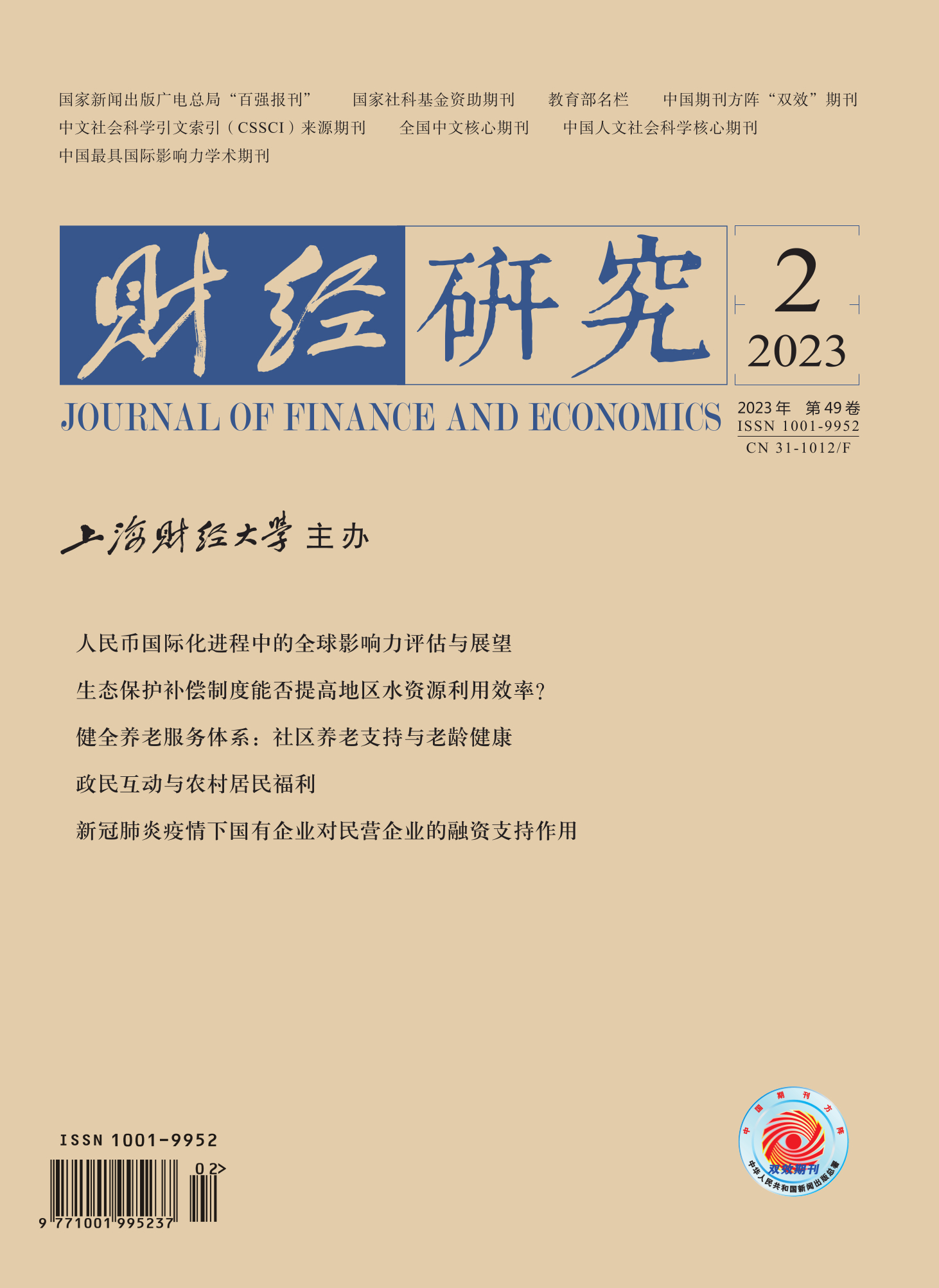探讨教育的机会不平等可以为改善人力资本不平等、促进弱势儿童发展以及缓解代际传递等重要话题提供经验证据。基于中国家庭收入调查2002—2018年四轮数据,文章测算了中国教育机会不平等系数及其变化趋势,并估计了不同环境变量对教育机会不平等的贡献度。研究发现:近20年中国的教育不平等呈现下降趋势;而教育机会不平等也在2018年呈现较大降幅。其中,户口和父亲受教育年限是贡献较大的两个环境变量。随着时间推移,户口对教育机会不平等的解释力度逐渐减小,而父亲受教育年限的解释力度逐渐增大。从教育质量的角度出发,近年来家庭背景因素在解释上重点大学的机会不平等中占据主要地位。纳入努力变量的结果表明,努力的贡献度在2018年更高,即通过努力来消解教育机会不平等的可能性越来越大。然而,努力仍未在高质量教育获得中发挥重要作用。文章较为全面地描绘了中国教育机会不平等变动趋势及其成因,为下一步在教育事业深化改革过程中推进教育公平和提升教育质量提供了经验证据。
教育机会不平等的变化趋势及成因:2002—2018年*
摘要
参考文献
3 李春玲. 高等教育扩张与教育机会不平等−高校扩招的平等化效应考查[J]. 社会学研究,2010,(3):82−113. DOI:10.19934/j.cnki.shxyj.2010.03.004
4 李莹,吕光明. 中国机会不平等的生成源泉与作用渠道研究[J]. 中国工业经济,2019,(9):60−78. DOI:10.19581/j.cnki.ciejournal.2019.09.004
5 李云森,齐豪. 中国农村教育的代际因果关系−基于1970年代农村基础教育普及政策的研究[J]. 世界经济文汇,2011,(4):72−88. DOI:10.3969/j.issn.0488-6364.2011.04.006
8 史新杰,卫龙宝,方师乐,等. 中国收入分配中的机会不平等[J]. 管理世界,2018,(3):27−37. DOI:10.3969/j.issn.1002-5502.2018.03.003
9 唐俊超. 输在起跑线−再议中国社会的教育不平等(1978-2008)[J]. 社会学研究,2015,(3):123−145. DOI:10.19934/j.cnki.shxyj.2015.03.006
11 杨成荣,张屹山,张鹤. 基础教育公平与经济社会发展[J]. 管理世界,2021,(10):152−165. DOI:10.3969/j.issn.1002-5502.2021.10.012
13 张楠,林嘉彬,李建军. 基础教育机会不平等研究[J]. 中国工业经济,2020,(8):42−60. DOI:10.3969/j.issn.1006-480X.2020.08.004
14 朱州,赵国昌. 高等教育与中国女性生育数量[J]. 人口学刊,2022,(1):16−31. DOI:10.16405/j.cnki.1004-129X.2022.01.002
15 邹薇,马占利. 家庭背景、代际传递与教育不平等[J]. 中国工业经济,2019,(2):80−98. DOI:10.19581/j.cnki.ciejournal.2019.02.012
16 Benaabdelaali W, Hanchane S, Kamal A. Chapter 13 educational inequality in the world, 1950-2010: Estimates from a new dataset[A]. Bishop J A, Salas R. Inequality, mobility and segregation: Essays in honor of jacques silber[M]. Bingley: Emerald Group Publishing Limited, 2012.
17 Chávez-Juárez F, Soloaga I. Scale vs. Translation invariant measures of inequality of opportunity when the outcome is binary[EB/OL]. Social Science Research Network(SSRN), https://papers.ssrn.com/sol3/papers.cfm?abstract_id=2226822, 2015-03-16.
18 Checchi D, Peragine V. Inequality of opportunity in Italy[J]. The Journal of Economic Inequality,2010,8(4): 429−450. DOI:10.1007/s10888-009-9118-3
20 Ferreira F H G, Gignoux J. The measurement of inequality of opportunity: Theory and an application to latin America[J]. Review of Income and Wealth,2011,57(4): 622−657. DOI:10.1111/j.1475-4991.2011.00467.x
21 Frankenberg E, Lillard L, Willis R J. Patterns of intergenerational transfers in southeast Asia[J]. Journal of Marriage and Family,2002,64(3): 627−641. DOI:10.1111/j.1741-3737.2002.00627.x
23 Golley J, Kong S T. Inequality of opportunity in China’s educational outcomes[J]. China Economic Review,2018,51: 116−128. DOI:10.1016/j.chieco.2016.07.002
24 Golley J, Zhou Y X, Wang M Y. Inequality of opportunity in China’s labor earnings: The gender dimension[J]. China and World Economy,2019,27(1): 28−50. DOI:10.1111/cwe.12266
25 Hannum E, Wang M Y. Geography and educational inequality in China[J]. China Economic Review,2006,17(3): 253−265. DOI:10.1016/j.chieco.2006.04.003
26 Juárez F W C, Soloaga I. IOP: Estimating ex-ante inequality of opportunity[J]. Stata Journal,2014,14(4): 830−846. DOI:10.1177/1536867X1401400408
27 Lewbel A. Using heteroscedasticity to identify and estimate mismeasured and endogenous regressor models[J]. Journal of Business & Economic Statistics,2012,30(1): 67−80. DOI:10.1080/07350015.2012.643126
28 Roemer J E. Equality of opportunity[M]. Cambridge: Harvard University Press, 1998.
29 Shorrocks A F. Decomposition procedures for distributional analysis: A unified framework based on the Shapley value[J]. The Journal of Economic Inequality,2013,11(1): 99−126. DOI:10.1007/s10888-011-9214-z
30 Stock J H, Yogo M. Testing for weak instruments in linear IV regression[A]. Andrews D W K, Stock J H. Identification and inference for econometric models: Essays in honor of thomas rothenberg[M]. New York: Cambridge University Press, 2005.
31 Thomas V, Wang Y, Fan X B. Measuring education inequality: Gini coefficients of education[M]. Washington: World Bank Publications, 2001.
32 Uddin M N. Intergenerational transmission of human capital: Evidence with an alternative instrument from Thailand[J]. Journal of Economic Studies,2019,46(3): 671−680. DOI:10.1108/JES-10-2017-0288
33 Wu X G, Zhang Z N. Changes in educational inequality in China, 1990-2005: Evidence from the population census data[A]. Hannum E, Park H, Butler Y G. Globalization, changing demographics, and educational challenges in East Asia[M]. Bingley: Emerald Group Publishing Limited, 2010.
34 Yang J, Huang X, Liu X. An analysis of education inequality in China[J]. International Journal of Educational Development,2014,37: 2−10. DOI:10.1016/j.ijedudev.2014.03.002
35 Zhou X G, Moen P, Tuma N B. Educational stratification in urban China: 1949-94[J]. Sociology of Education,1998,71(3): 199−222. DOI:10.2307/2673202
引用本文
赵心慧. 教育机会不平等的变化趋势及成因:2002—2018年*[J]. 财经研究, 2023, 49(2): 79-94.
导出参考文献,格式为:





 6033
6033  13440
13440

